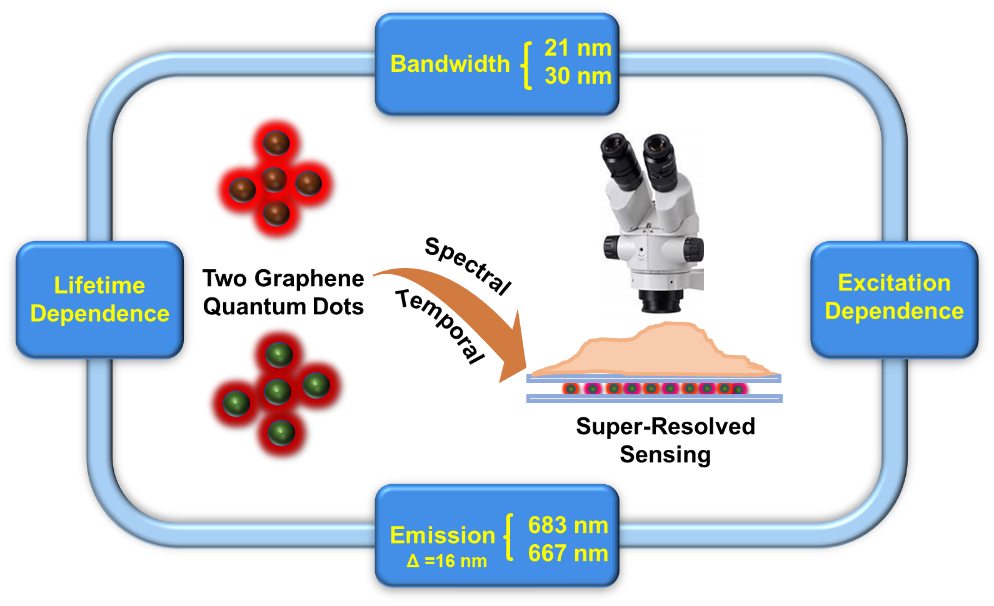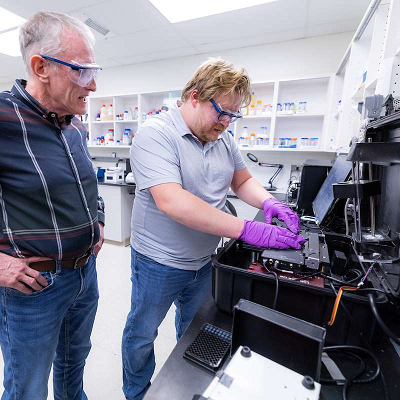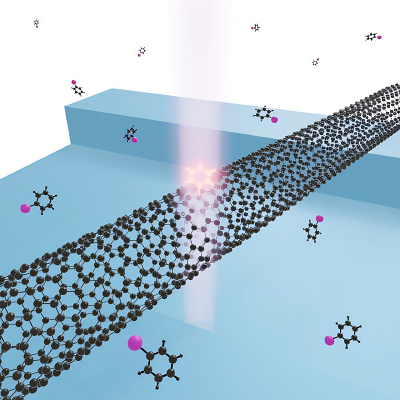Since 2016, a research group led by Prof. XIE Zheng from the Technical Institute of Physics and Chemistry of the Chinese Academy of Sciences (CAS) has systematically proposed a new method in preparation of carbon dots with narrow band. Recently, two types of narrow-bandwidth red emission Graphene Quantum Dots (GQDs) had been successfully prepared by Prof. XIE's team and related work was published in NPG Asia Materials.
In this research, GQDs are prepared by a one-step method with planar conjugated macrocyclic phthalocyanine compounds as the carbon sources. The full width at half maximum of the two GQDs (21 nm and 30 nm, respectively) have reached the range of ultra-narrow bandwidth emission in luminescent materials.

Schematic diagram of the luminescence characteristics and application in super-resolution imaging of two ultra-narrow-band red emission GQDs
In addition to ultra-narrowband emission, GQDs also have the characteristics of red emission wavelength, close emission peak position (16 nm), partial dependence on excitation wavelength and fluorescence lifetime. Based on the above characteristics, Prof. Zeev Zalevsky, Dean of the Faculty of Engineering of the Bar-Ilan University and Prof. XIE's team have proposed a super-resolution sensing strategy. By using the new sensing strategy, scientist can extract spectral information without using a spectrometer.
"With the help of these "tiny dots", we can use the super-resolution technology to break the optical diffraction limit and fill the gap between the electron microscope (about 1 nm) and the ordinary visible optical microscope (200-250 nm). We can observe finer structures or higher-resolution images," said Prof. XIE.
Read the original article on Chinese Academy of Sciences (CAS).







